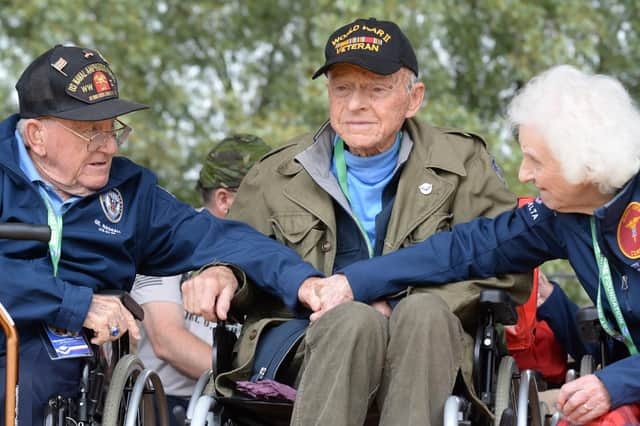Second World War veterans honoured on eve of D-Day anniversary


Veterans, their families and French and international visitors braved the rainy weather to take part in series of events organised over the weekend and on Monday for the 78th anniversary of D-Day.
Many felt the celebrations paying tribute to those who brought peace and freedom on the continent have a special meaning this year – as war is raging again in Europe since Russia’s invasion of Ukraine on February 24.
Advertisement
Hide AdAdvertisement
Hide AdThis year’s D-Day anniversary also comes after two successive years of the Covid-19 pandemic restricted or deterred visitors.
Peter Smoothy, 97, served in the British Royal Navy and landed on the beaches of Normandy on D-Day.
“The first thing I remember are the poor lads who didn’t come back … It’s a long time ago now, nearly 80 years … And here we are still living,” he told the Associated Press.
“We’re thinking about all these poor lads who didn’t get off the beach that day, their last day, but they’re always in our minds.”
Welcomed to the sound of bagpipes at the Pegasus Memorial in Ranville, British veterans attended a ceremony commemorating a key operation in the first minutes of the Allied invasion of Normandy, when troops had to take control a strategically crucial bridge.
Bill Gladden, 98, took part in the D-Day British airborne operation and was later shot while defending the bridge.
“I landed on D-Day and was injured on the 18th of June … So I was three years at the hospital,” he said.
Meanwhile, on the British side of the Channel, then 17-year-old Mary Scott was working at the communications centre in Portsmouth, listening to the coded messages coming from the front line and passing them on as part of the co-ordination of the operations on Utah, Omaha, Gold, Juno and Sword Beaches.
Advertisement
Hide AdAdvertisement
Hide Ad“The war was in my ears,” she recalled, describing the radio machine she was operating via levers.
“When they (communication officers) had to respond to my messages and they lifted their lever, you heard all the sounds of the men on the beaches, bombs, machine guns, men shouting, screaming.”
Ms Scott, who will soon turn 96, said she got very “emotional” when arriving in Normandy on Saturday as part of the trip organised by the Taxi Charity for Military Veterans and was in tears when seeing the Normandy beaches.
On Monday, the Normandy American Cemetery and Memorial, home to the graves of 9,386 who died fighting on D-Day and in the operations that followed, will host US veterans and thousands of visitors in its first major public ceremony since 2019.
On D-Day, Allied troops landed on the beaches codenamed Omaha, Utah, Juno, Sword and Gold, carried by 7,000 boats.
On that single day, 4,414 Allied soldiers lost their lives and more than 5,000 were wounded. On the German side, several thousand were killed or wounded.